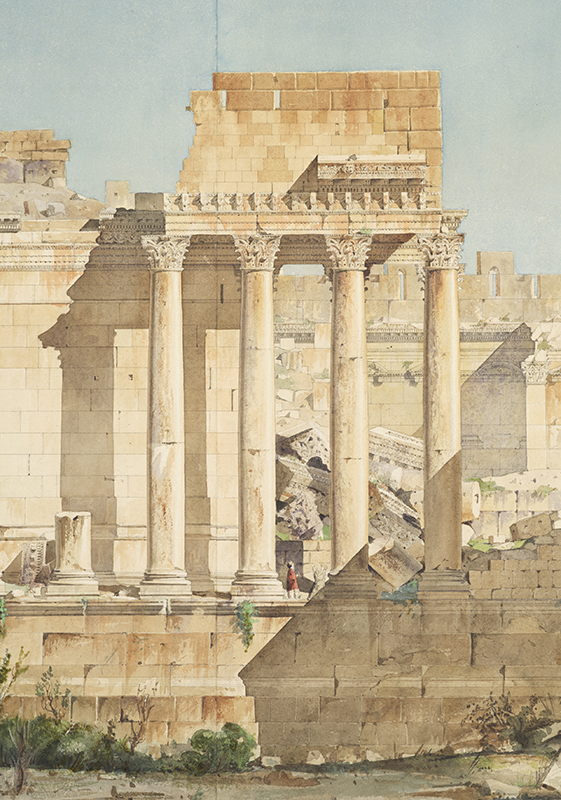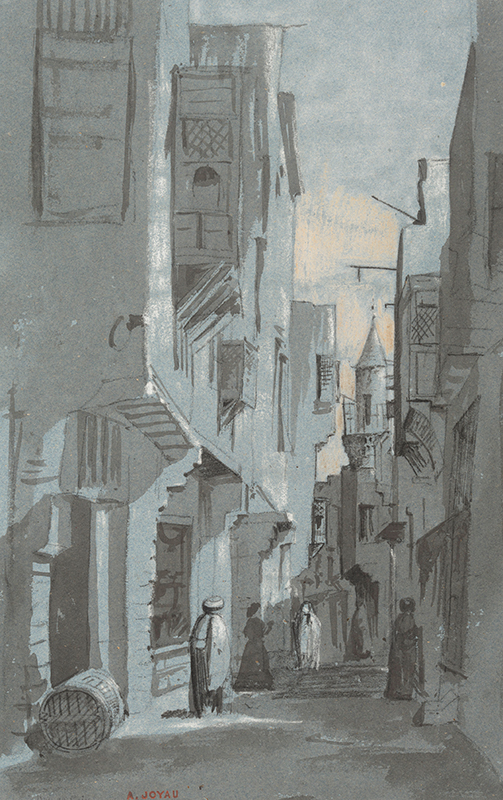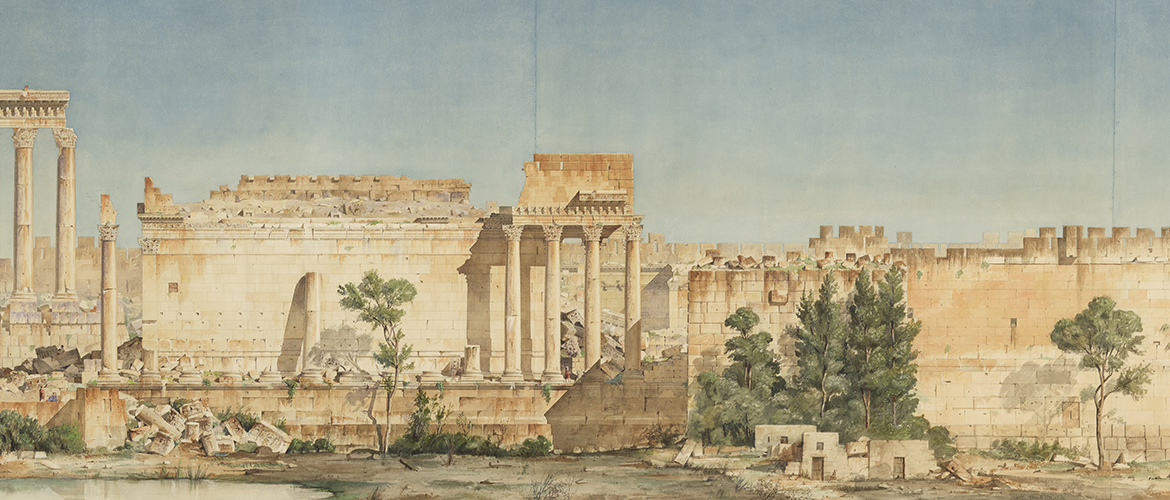The exhibition will be closed during the Christmas holidays from 17 December to 3 January inclusive. It will reopen on Wednesday 4 January.
Baalbek, an emblematic site on the Bekaa plain in northeastern Lebanon, attracted two young architects in the 19th century who were residents of the French Academy in Rome: Achille Joyau and Gaston Redon.
As part of their "Envois", exercises imposed on the winners of the Prix de Rome in which they had to propose a restoration of an ancient monument, they drew with watercolors and rendered with scrupulous fidelity the beauty of these ruins surrounded by high walls and the arid and mountainous environment that surrounds them. The twenty-five unpublished works presented in this exhibition are unique testimonies of the archaeological site which was not excavated until 1898.
The site of Baalbek remains to this day a major archaeological jewel of Lebanon.
Admired by Lamartine, Châteaubriand and Flaubert, Baalbek, an emblematic site of the Bekaa plain in Lebanon, attracted in the 19th century two young architects who were then boarders at the French Academy in Rome - Villa Medici: Achille Joyau in 1865 and Gaston Redon in 1887. As part of their "Envois", school exercises imposed on the Prix de Rome laureates, they were given the task of studying an ancient monument and proposing a restitution, i.e. a restoration.
Joyau and Redon decided to venture out of Rome and discover this mythical place in Lebanon. Before reaching it, they each made long journeys by caravan or on horseback, crossing difficult roads and staying, depending on their route, in Alexandria, Cairo, Memphis, Jerusalem, Damascus or even Smyrna.
Celebrated for its gigantism, Baalbek seduces by the originality of its Greco-Roman architecture enriched with Semitic and Oriental elements. The stays of Joyau and Redon, which varied between five and ten months, allowed them to draw up a precise state of the ancient monuments through superb watercolor sketches. Their drawings reflect with scrupulous fidelity the beauty of these ruins surrounded by high walls, but also the arid environment that surrounds them with the high mountains of the Anti-Lebanon in the background.
Their approach, close to that of an archaeologist, carefully restores the numerous buildings that made up the sanctuary, as well as their various architectural elements, including the layout of the walls, the entablatures and the capitals of the columns. To this description is added the sensitivity of the artists towards the materials used, the vegetation that invades the ruins in a disorderly manner, the bright blue sky.
The graphic qualities of these works reveal the watercolor talents of these young architects and are unique testimonies of the site of Baalbek, which only had its first archaeological excavations in 1898.
Curated by Emmanuelle Brugerolles and Corisande Evesque.

Joseph-Louis-Achille Joyau (1831 – 1873) Temple d’Héliopolis, état actuel, façade latérale sud [à gauche : détail ; ci-dessous oeuvre entière] Graphite, plume, encre noire et aquarelle sur papier entoilé, 0,8 x 3,2 m

Joseph-Louis-Achille Joyau (1831 – 1873) Temple d’Héliopolis, état actuel, façade latérale sud [à gauche : détail ; ci-dessous oeuvre entière] Graphite, plume, encre noire et aquarelle sur papier entoilé, 0,8 x 3,2 m

Joseph-Louis-Achille Joyau (1831 – 1873) Temple d’Héliopolis, état actuel, façade principale Graphite, plume, encre noire et aquarelle sur papier entoilé, 0,6 x 1,4 m

Gaston-Fernand Redon (1853 – 1921) Héliopolis. Temples de Baalbek, plan de restauration à 0 m 01 p.m., élévation restaurée des façades des temples. Graphite, plume, encre noire et aquarelle sur papier entoilé, 1,3 x 3,2 m

Joseph-Louis-Achille Joyau (1831 – 1873) Vue du temple d’Héliopolis à Baalbek Graphite et aquarelle, 0,15 x 0,5 m

Joseph-Louis-Achille Joyau (1831 – 1873) Rue au Caire Pierre noire, lavis d’encre de Chine, rehauts de gouache blanche et beige sur papier bleu, 0,35 x 0,23 m




